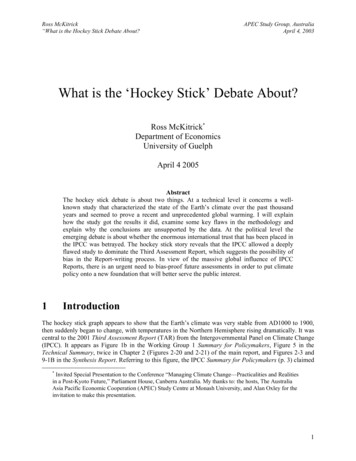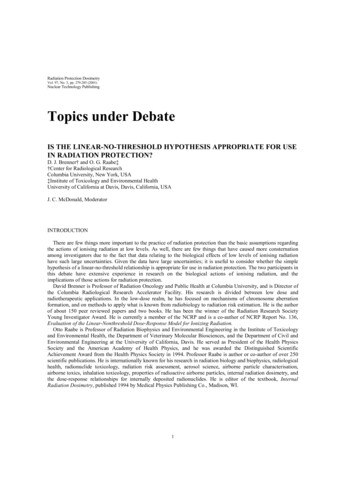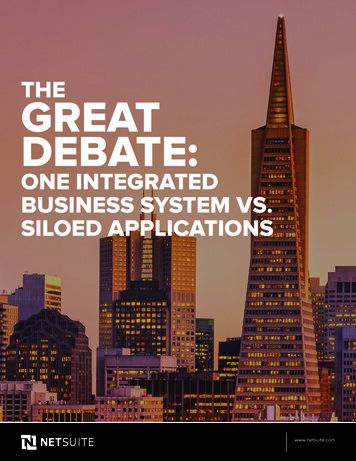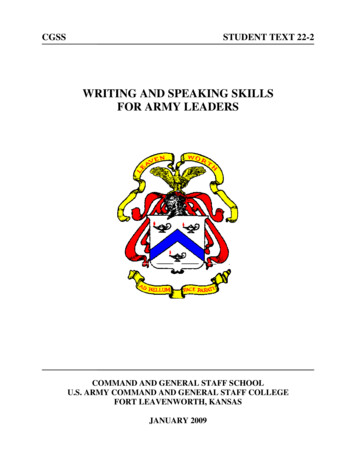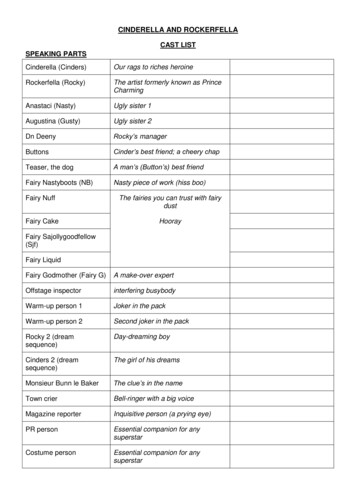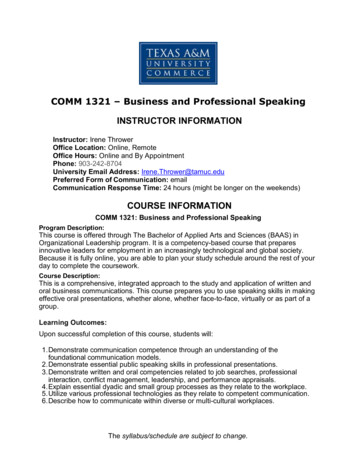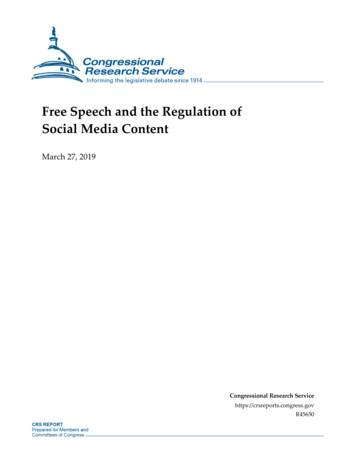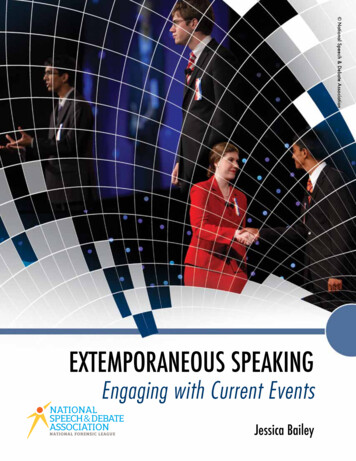
Transcription
National Speech & Debate AssociationEXTEMPORANEOUS SPEAKINGEngaging with Current EventsJessica Bailey
EXTEMPORANEOUS SPEAKINGEngaging with Current EventsJessica Bailey NATI ONAL S PEE CH & DEB AT E A S S OCIAT ION
EXTEMPORANEOUS SPEAKING: Engaging with Current EventsCopyright 2013 by the National Speech & Debate Association All rights reserved.Published byNational Speech & Debate Association125 Watson Street,PO Box 38,Ripon, WI 54971-0038 USAPhone: (920) 748-6206Fax: (920) 748-9478info@speechanddebate.orgNo part of this publication may be reproduced, stored in a retrieval system, or transmitted in any form or by any means,now known or hereafter invented, including electronic, mechanical, photocopying, recording, scanning, informationstorage and retrieval, or otherwise, except as permitted under Section 107 or 108 of the 1976 United States CopyrightAct, without the prior written permission of the Publisher.The National Speech & Debate Association does not discriminate on the basis of race, color, national origin, religion, sex,age, gender identity, gender expression, affectional or sexual orientation, or disability in any of its policies, programs, andservices.Printed and bound in the United States of America
ContentsIntroduction . . . . . . . . . . . . . . . . . . . . . . . . . . . . . . . . . . . . . . 01Chapter 1: The Purpose of an Extemporaneous Speech . . . . . . . . . . . . . . . . . . 05Chapter 2: Understanding Your Audience . . . . . . . . . . . . . . . . . . . . . . . . . 15Chapter 3: Developing Your Speech . . . . . . . . . . . . . . . . . . . . . . . . . . . 21Chapter 4: Research and Evidence . . . . . . . . . . . . . . . . . . . . . . . . . . . . 55Chapter 5: Presenting Your Speech . . . . . . . . . . . . . . . . . . . . . . . . . . . . 73Conclusion . . . . . . . . . . . . . . . . . . . . . . . . . . . . . . . . . . . . . . . . 81Appendix A: Sample Extemporaneous Speaking Questions . . . . . . . . . . . . . . . . 83Appendix B: Resource List . . . . . . . . . . . . . . . . . . . . . . . . . . . . . . . . 89Appendix C: Tournament Logistics . . . . . . . . . . . . . . . . . . . . . . . . . . . . 95Appendix D: Writing Quality Extemporaneous Speaking Questions . . . . . . . . . . . . 99References . . . . . . . . . . . . . . . . . . . . . . . . . . . . . . . . . . . . . . 101 NATI ONAL S PEE CH & DEB AT E A S S OCIAT ION
IntroductionImagine yourself at a dinner party with a couple of friends and many others thatyou have never met before. In the midst of a conversation, one of your friendsturns to you and says, “Hey, you know a lot about politics. Alice wants to knowhow the Electoral College works. I can’t remember.” Suddenly twelve heads swiveltowards you, waiting to hear what you have to say. All eyes are on you, who hasjust been crowned an expert by your friend. Will you mumble something about notbeing able to remember either and return to your dinner red with embarrassment atbeing put on the spot? Or will you answer confidently and explain to these strangersthe basics of the Electoral College?At some point in your life, you will find your-people. Comedian Jerry Seinfeld has jokedself in a situation where you must speak in-that our fear of public speaking is so greattelligently and confidently in front of otherthat if we were attending a funeral, most of NATI ONAL S PEE CH & DEB AT E A S S OCIAT IONEXTEMPORANEOUS SPEAKING: Engaging with Current Events01
us would rather be in the casket than givinging the art of public speaking will give you thethe eulogy. Studies of fear anxiety consistent-skills and confidence necessary to rise to anyly rank public speaking at the top of the listoccasion and communicate your message toof things we would do pretty much anythingany audience.to avoid. Yet research also indicates that theWithin the world of competitive publicmore we engage in public speaking, the morespeaking, there is a category of speeches thatadept we become at it and the less anxiety itdemands the ability to think on one’s feet andprovokes.tap into a wealth of knowledge to synthesize102Whether you find yourself at a job inter-and explain complicated real-world issues. Thisview, giving a presentation at college, or evencategory is extemporaneous speaking, and assimply asking another person out on a date,its name implies, it is performed without thethe ability to communicate effectively will bebenefit of a script or memorization. In extem-crucial to your success. Studying and practic-poraneous speaking, the speaker is tasked withEXTEMPORANEOUS SPEAKING: Engaging with Current Events NAT I O NA L SP E E C H & D E BATE A S S O CI ATI O N
answering a question about current eventsthe most part, we do not script out our con-that incorporates research and evidence in anversations with other people, but we may planengaging and compelling way – all with onlyin advance what we wish to say. For example,thirty minutes to prepare the speech.when you go to the doctor, you may have inIf you are still reading this text, congratu-mind a set of questions you want to bringlations. You have overcome the first hurdle ofup, or on a job interview, you will plan someextemporaneous speaking – the feeling thattalking points about your skills in advance,there is no way you could ever do somethingbut you would not write them out word forlike that. At this point it is worth acknowl-word and memorize them.edging something that you have probably al-As the category name implies, extempora-ready realized – extemporaneous speaking isneous speakers come up with their speechesdifficult. To excel at it takes significant prac-just prior to delivering them. This is not to saytice and a deliberate approach to research andthat they pull their speeches out of the ether –speech writing. Once you have learned themost of the work of extemp speaking is prepa-essential skills involved in extemporaneousration completed long before the tournament.speaking, however, you will be prepared toThe best extempers have cultivated a wealth ofhandle almost any public speaking situationknowledge about current events and world af-you may encounter later in life.fairs, economic theory and international rela-Extemporaneous speaking is the art of giv-tions, and even pop-culture and social trendsing speeches on the spot – without notes orto prepare an intelligent and interesting an-memorization – relying only on the speaker’sswer to a question they selected just thirtydepth of knowledge and their ability to ex-minutes before their speech.plain what they know in a coherent, engagingExtemp speaking may be difficult, but withmanner. As a category of forensics competi-practice and dedication, nearly anyone cantion, extemporaneous speaking (or “extemp”succeed at it. When you master the art of ex-as it is commonly known) is the manifestationtemp speaking, you have gained a myriad ofof public speaking skills in their purest form –communication skills that will serve you inwithout the support of notes or memorization,every aspect of your life and the confidencethe speaker is on her own when she is in frontto use them whenever a challenge arises. Forof an audience, with only her memory, knowl-those who find public speaking in general toedge, and command of language to aid her.be very frightening, the thought of giving aExtemporaneous speaking is the most nat-speech after only half an hour of preparationural form of public speaking in that it mostwithout the benefit of notes on issues in cur-closely mirrors everyday conversations. Forrent affairs can be inconceivable. For those NATI ONAL S PEE CH & DEB AT E A S S OCIAT IONEXTEMPORANEOUS SPEAKING: Engaging with Current Events03
who undertake this category, however, thecurrent events and present their answer toskills and knowledge they gain serve them intheir selected question after a period of prepa-many ways throughout their lives, with one ofration time, during which they will outlinethe biggest advantages they gain being person-and practice their speech.al confidence and poise under pressure.In this text, we will explore the category ofThe specific rules that govern extemporane-extemporaneous speaking in three phases: re-ous speaking will vary from state to state andsearch, practice, and performance. We will dis-tournament to tournament. In some instancescuss how to craft a thesis statement in answeryou may be given 45 minutes of preparationto a question, how to develop introductionstime, whereas other times you will be given 30and transitions that engage and entertain,minutes, which is the standard length of prepand how to draw on a wealth of resources andtime used by the National Speech & Debateknowledge to construct a persuasive and intel-Association. Some tournaments will permitligent speech. Along the way we will also un-the use of laptops, while others will forbidcover ways of developing the confidence andtechnology. Despite these variations, everynatural public speaking skills that set great ex-extemporaneous speaker will select their topictempers apart.from three randomly drawn questions about04EXTEMPORANEOUS SPEAKING: Engaging with Current Events NAT I O NA L SP E E C H & D E BATE A S S O CI ATI O N
Chapter 1The Purpose of an Extemporaneous SpeechEvery speech has an ultimate purpose. Whether it is a politician conceding defeat in an election, an actor accepting an award, a lawyer presenting a closingargument, a late night talk show host delivering a monologue, a coach givinga pep talk at half time, or an employee presenting quarterly earnings figures at acompany meeting, every public address seeks to accomplish some goal. The degreeto which the speaker is successful in accomplishing that goal depends on having aclear understanding of her objective before she even begins delivering her speech.The purpose for the different types of speech-straightforward. In extemp, we speak aboutes mentioned above is clear. It could be tocurrent events. But just what are we supposedthank someone, to persuade a jury, to maketo do with that speech about current events?an audience laugh, or to inspire a team. TheIs the purpose to inform the audience aboutpurpose of an extemporaneous speech is lessthe current event you are speaking about? NATI ONAL S PEE CH & DEB AT E A S S OCIAT IONEXTEMPORANEOUS SPEAKING: Engaging with Current Events05
Or is it to persuade them to take a particularand extempers are often more adept at accom-stance on the issues surrounding the topic? Orplishing certain objectives than others. Ulti-perhaps it’s simply to present the informationmately, a good extemp speech accomplishes allin as entertaining a way as possible. Differentthree objectives in pursuit of the overarchingjudges place different emphasis on these goals,goal of simply answering the question.InformEvery extemp speech requires an element ofground information is really necessary; howexposition, during which you explain the con-one can provide it without hitting the audiencetext of the question and provide the necessaryover the head with facts they already know?background information for your audience toTake a look back at the preceding para-understand your arguments. Determining howgraph. You will notice that in bringing upmuch background information is required canthe topic of Social Security and explainingbe difficult. You will often draw questionswhy you might assume that it is unnecessaryabout topics that are widely covered in theto provide background information, we havenews, and you may be inclined to think thatwoven in an explanation of some of the im-every thinking person should know at leastportant aspects of Social Security that providethe very basics about the issues. Social Securitya context for a discussion about it. We said:is one such issue.** This entitlement programThis entitlement program makes up a hugemakes up a huge portion of the government’sportion of the government’s budget, which ex-budget, which explains why it is frequently theplains why it is frequently the focus of polit-focus of political disagreements. As the sourceical disagreements. As the source of income forof income for millions of retired Americans,millions of retired Americans, nearly everyonenearly everyone at some point in their lives willat some point in their lives will have directhave direct experience with Social Security, soexperience with Social Security, so one mightone might assume that most Americans have atassume that most Americans have at least aleast a working understanding of the program.working understanding of the programIt can be difficult to gauge how much back* Examples used in this text are meant to illustrate and inform thereader on the nature of extemporaneous speaking and should not betaken as an endorsement of any particular perspective or opinion oncurrent events issues.06EXTEMPORANEOUS SPEAKING: Engaging with Current EventsThe italicized text is the background information that helps frame the discussion ofSocial Security. Rather than explicitly saying“Social Security is defined as an entitlement NAT I O NA L SP E E C H & D E BATE A S S O CI ATI O N
program that provides a source of income toresearch paper to begin with a section on back-retired Americans. It is an expensive govern-ground information, a good speech does notment program,” we have peppered our analysisfollow the same structure as an essay. A speechwith information that helps the audience un-should be conversational and relatively easy forderstand the topic in a way that seamlessly fitsa judge to follow, even if he or she is not takingwithin the substance of our discussion.notes. Second, this approach makes i
the most part, we do not script out our con-versations with other people, but we may plan in advance what we wish to say. For example, . argument, a late night talk show host delivering a monologue, a coach giving a pep talk at half time, or an employee presenting quarterly earnings figures at a company meeting, every public address seeks to accomplish some goal. The degree to which the .

